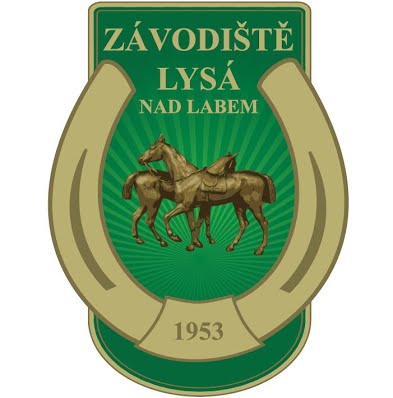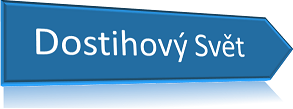April 2018 newsletter

I have set myself the task of posting this newsletter not later than 11 o’clock on Monday, April 2nd, as that is when I will be getting ready to go to Lysá nad Labem for the long-awaited opening day of the 2018 Czech racing season. The first race at Lysá is at 1 p.m., Václav Janáček will be riding, and the raceday sponsor is sending out some of his best horses to run: Touch of Genius, Timekeeper and Tamarind Cove, all by Galileo. The weather forecast for Easter Monday is not too good - chilly and a risk of rain - but after five months without racing, who cares! It is only a 30-minute walk to and from the railway station, and it is a small matter that there only very limited cover at the racecourse.
The very cold weather in February continued into March, and has only gradually moderated. There have been signs that spring is on the way, but it has not yet properly arrived. The grass at our racecourses, which never grows like the grass in Kildare or Kentucky, has not had much of a chance to recover from the winter, especially from those three freezing cold weeks in February and at the beginning of March. Nevertheless, the show must go on!
I spent quite a few idle hours in March 2018 reading through all the old newsletters that I have written here, beginning in 2012 – unfortunately, I do not have access to the monthly newsletters that I wrote for several years before that on the old Paddock Revue web site. Rereading the newsletters was quite a memory jogger for me. I remembered everything, but I was surprised by the order in which they happened. I was pleased to see that the newsletters serve as a chronicle of what has been going on in Czech racing over the last five and a half years (and in what order). Or, at least, they provide a chronicle of the things that have attracted my attention. That is more or less what I had set out to do.
A news conference was held by the Jockey Club of the Czech Republic last Tuesday, at one of my favourite locations, the art nouveau Hotel Paříž, in the Old Town. I was set to go, but at the last moment I had to do something else, which as a matter of fact fell through. So, to put it mildly, I was disappointed. In fact, I was ****ed off. Fortunately, however, I have found detailed reports on the press conference in our ‘rival’ websites: Michaela Zemanová wrote on the Fitmin Turf website, and Petr Malík wrote on the Galopp Reporter website. I think it may be easy for me, and interesting for you, if I merge and condense what they wrote, translate some of the quotations, and add some explanations and comments.
Jiří Charvát, president of the Jockey Club of the Czech Republic and representative of Most racecourse, said “Czech horseracing is in the best condition it has ever been, in terms of the amounts of prizemoney won at racecourses abroad and the ratings of our top horses.” Four Czech-trained horses were rated over 100 in 2017. In 2013, our horses won a total of CzK 29 million (EUR 1.1 million) abroad. In 2017 they won a total of CzK 75 million (almost EUR 3 million). Even before the beginning our our local racing season, Czech-trained horses have won CzK 4.7 million in prizemoney in 2018 abroad, mainly in France and in Italy. The number of Czech-trained horses good enough to run successfully in black-type races abroad has increased considerably (18 finishes in the first three places in black-type races in 2017).
Jiří Charvát reckons that the average cost per horse to an owner is CzK 189 000 (EUR 7 500) per year, and on an average, the owner’s winnings within the Czech Republic cover 23.9% of those outgoings. However, when we add in the prizemoney won abroad, 61.6% of the outgoings are covered, which is well above the European average.
Total prizemoney for races in the Czech Republic was about CzK 46 million in 2017. Payments by owners for entry+declaration to run amounted to 41% of this prizemoney. It is still a lot, but the amount contributed by owners in this way has been as high as 50% in recent years.
Jiří Charvát remarked that Most racecourse, which his company now co-owns with the Town of Most, made a loss of CzK 6 million last year.
Jiří Charvát, as one of our major racehorse owners, is well aware of the desirability of raising the prizemoney available in the Czech Republic. He pointed out that PMU (pari mutuel) will raise the number of racedays in the Czech Republic that it covers to four this year, which should bring in CzK 2 million. In addition, there are plans for Betino, our on-course betting company, to offer an online option. Betino has been burdened with heavy overheads and a high level of taxation, and has not been able to make much of a contribution to prizemoney. Betino has been a bit of a disaster area for a long time, and some serious reform is overdue. Czech horseracing has been receiving little support from the state, either indirectly through a favourable tax regime or directly through grants. A limited amount of money has come in from the Ministry of Agriculture, in support of horse breeding. The Jockey Club is now looking for some financial support from the Ministry of Education, Youth and Sport.
The next speaker was Martin Pecka, who, since January 1st, 2018 has been the manager of Prague Velká Chuchle racecourse, taking over from Petr Drahoš, who did the job for 16 years. The racecourse was taken over in December 2017 by Radovan Vítek, a billionaire real estate developer http://www.dostihovy-svet.cz/en/node/7746 . Radovan Vítek’s wife and daughters are in show jumping. Martin Pecka’s previous job was managing the Equitana Hotel Resort at Martinice u Březnice, a wellness resort with horses and the other facilities connected with wellness centres, and he has experience of organizing some equestrian events. Martinice u Březnice is about an hour south of Prague Velká Chuchle racecourse, between Přibram and Písek. The new management has taken on the programme that had been agreed with the previous management, and will offer 18 race days this year.
Martin Pecka said that the weather conditions have made it difficult to prepare the racecourse for the new season, but that everything will be ready for the Gomba Handicap meeting on Sunday, April 8th. The course continues to show signs that it was flooded in 2002 and again in 2013. The new management has plans to improve the condition of the turf and also many of the facilities. There was mention of a potential investor who might make a big investment.
Czech Derby day will clash with World Cup football in Russia, and negotiations are being made to ensure a live television slot on Czech Television for our event. Since the Czech team did not qualify for the competition in Russia, it may be possible to run the race, with a direct transmission, on Sunday, June 24th, which is the date set aside for our Derby.
The third speaker was Martin Korba, manager of Pardubice racecourse. Pardubice will put on 9 race days this year, beginning on the public holiday on May 8th. Velka Pardubicka day is Sunday, October 14th. He promises an interesting race day on the Saturday, October 13th, headed by a classical oval-track steeplechase with prizemoney of CzK 1 million, equivalent to a bit less than EUR 40 000. The Town of Pardubice improving the car parking facilities at the racecourse, which got very muddy on VP day last year, to the chagrin of VVIP ladies and their gentlemen. Martin Korba assured the gathered newshounds that he has promises of horses from France and a good Irish chaser for the Velka Pardubicka!
In his capacity as a representative of Most racecourse, Jiří Charvát explained that 6 meetings are planned for 2018, one fewer than last year. He added that, if one of the race days planned for the other courses drops out, Most is ready to step in and organize another race day.
Something that I do not understand, and that is differently reported in my two sources, seems to be happening about on-course betting. It seems that there is a law that prevents Betino taking bets at more than 5 racecourses. This is credible, as poorly thought-out new laws are not unusual in Czech legislation, or, indeed, in plenty of other countries. Bets will be accepted as before at five racecourses: Prague Velká Chuchle, Pardubice, Karlovy Vary, Most and Lysá. At the other courses, we will somehow be able to bet electronically, probably. Martin Pecka assured those present at the press conference that everything should turn out OK.
The April 2018 newsletter is ready to be posted on March 29th, and I hope everyone else will also meet the deadlines set for racing early in the Czech season. Do be sure that you will be welcome at the Czech racecourses, and do consider arranging a long weekend here, or fitting an afternoon at the races into some trip that you are making. My e-mail, by the way, is Robin.Arthur.Healey@cvut.cz, and I can let you know how to arrange a trip to our racecourses.
